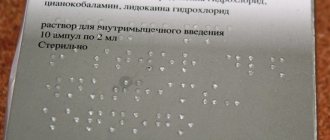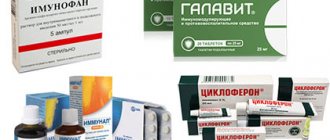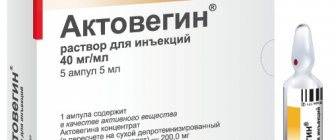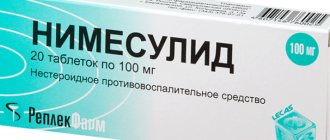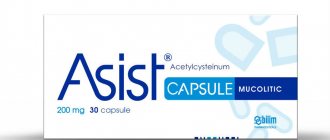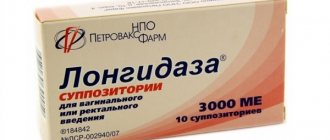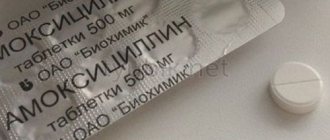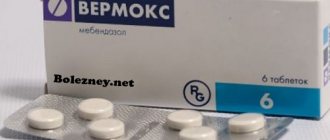Sodium chloride is a universal drug that is used both for direct injection into the blood and for dissolving drugs. Due to its antibacterial effect and complete isotonic compliance with blood plasma, the drug is used to treat dehydration and eliminate intoxication. The use of a solution for inhalation and washing of purulent wounds is also effective.
Description of the drug
Sodium chloride is available in the form of a ready-made solution (in a bottle or bottle), a powder for its preparation, as well as a nasal spray or solvent for medicines. The main active ingredient is sodium chloride (sodium salt).
The drug regulates the osmotic pressure of plasma and free fluid. When the level of sodium chloride in the blood decreases, water penetrates from the vessels into the interstitial fluid; with a pronounced deficiency, muscle spasms and convulsions of skeletal muscles are observed, and disruption of the functioning of the nervous and cardiovascular systems is observed.
When administering glucocorticosteroids in high doses, sodium chloride is not used.
The drug is completely isotonic with plasma, therefore it is quickly removed from the vascular bed, increasing only temporarily the volume of circulating fluid. The solution can also be used externally.
In this case, it exhibits antimicrobial activity and promotes the removal of pus. When administered intravenously, it enhances diuresis and replenishes the lack of sodium and chlorine ions.
The drug is also used in the form of a nasal spray. The main active substance in it, sodium chloride, is found in concentrations of 0.65% or 0.9%. It helps to moisturize the nasal mucosa, soften dry crusts in the nose, remove them, and thin the mucus. Due to these factors, there is a rapid improvement in well-being and easier nasal breathing.
Pharmacological effects
Saline solution is available in several variations:
- For infusions, external use, enemas, dilution of medications. Available packaged in bottles with a volume of 100, 200, 400 ml.
- For diluting medications, which will then be administered by subcutaneous, intramuscular injection. Packaged in glass ampoules with a volume of 5, 10, 20 ml.
- Tablets intended for oral use. Each tablet contains 0.9 mg of sodium chloride. Before use, the tablet is dissolved using boiled warm water in a volume of 100 ml.
In the body, sodium chloride is responsible for maintaining pressure in the extracellular fluid and plasma at a constant level. As a rule, the body receives a sufficient amount of the substance through food.
In some cases, various pathological conditions may develop, for example severe burns, vomiting, and diarrhea. They are characterized by large losses of salts and liquids. The result is a lack of chlorine and sodium ions. This situation provokes blood thickening, convulsions, spasms of smooth muscle structures, disruption of the functionality of the nervous system, as well as the circulatory system.
Timely administration of isotonic sodium chloride solution for injection into the body allows you to quickly replenish fluid deficiency and restore the balance of water and salts.
In addition, the product is characterized by detoxification and plasma-substituting properties, and therefore the solution can be used for infusion for minor blood loss.
When using sodium chloride for injection, certain adverse reactions may develop.
Intravenous administration may cause local reactions - hyperemia, burning. Use for a long time may cause symptoms of intoxication.
In addition, the following negative symptoms may occur:
- Potassium deficiency in the blood.
- Increased acidity.
- Swelling.
- Disorders of the menstrual cycle.
- Anemia.
- Dermatitis.
- Increased blood pressure, increased heart rate.
- Extreme thirst, lacrimation, anxiety, sweating, weakness, headache, dizziness.
- Stomach cramps, vomiting, diarrhea, attacks of nausea.
- Symptoms of intoxication (with prolonged use).
Indications for use
A solution of 0.9% of the drug is used for severe losses of intracellular fluid, and sacred conditions with limited entry into the body. Typically these include:
- severe vomiting due to poisoning or toxicosis in pregnant women;
- persistent diarrhea;
- some infectious diseases such as cholera;
- burns of large surfaces of the body.
The drug has pronounced effectiveness in conditions such as hypochloremia and hyponatremia, which are often accompanied by dehydration. The solution can be used for internal bleeding and for the purpose of diuresis. It is also used externally for washing wounds, mucous membranes of the nose and mouth, and moisturizing wound dressings.
How to properly rinse an adult’s nose - how to do a nasal shower at home
Rinsing the nose with saline is the most affordable and at the same time effective treatment for rhinitis. Saline liquid has a pronounced antimicrobial effect and does not dry out the mucous membrane. The procedure has no contraindications and no addictive effects. It can be carried out as needed: after contact with sick people, after visiting crowded places, as a preventive measure during the cold season.
Saline solution is included in most well-known nasal sprays, which cost significantly more. Therefore, these agents can be safely replaced with aqueous sodium chloride.
How and with what to rinse
To rinse your nose with saline, you will need freshly prepared liquid at room temperature and a convenient device. You can use an empty bottle of spray or drops, a pipette, or a syringe without a needle. Fans of this hygienic procedure are probably familiar with the neti pot - a convenient special teapot, whose size and shape make it easy to rinse the nose of both adults and children.
- When rinsing your nose with saline, you need to bend over so that your chin is parallel to the floor.
- Insert the spout of a teapot, bottle or syringe (without a needle) tightly into one nostril and turn your head slightly in the opposite direction.
- Open your mouth and breathe through it. Slowly squeeze or tilt the container so that the solution flows through the pinched nostril and flows out evenly through the second.
- Continue rinsing until the nasal cavity is completely free of mucus.
- Repeat similar steps on the other side. Half an hour to an hour after the hygiene procedure, you can use nasal medicinal drops.
using a neti pot to rinse the nose with saline solution
Even infants can cleanse and moisturize their sinuses with saline solution. They often suffer from congestion, mucus accumulation and dry crusts. But since it is difficult and even dangerous to clean their nose with a stream of liquid, it will be enough to drip a few drops into each nostril, turning your head to the side, then try to remove the mucus using a small rubber bulb or aspirator, and clean with cotton swabs.
After completing the procedure, you can lubricate the nasal mucosa with vegetable oil (peach, apricot). If your child is prescribed treatment for a runny nose by a doctor, then after rinsing with saline, you need to instill some medicine (with a break of at least 6 hours).
To rinse the nasal passages of an adult, we recommend using several methods. It all depends on the presence or absence of an irrigation device and the individual characteristics of the person.
First way
It is the simplest, but not the safest. The patient should pour the solution into his palm. Closing one nostril with your finger, try to sharply draw in the liquid from the second nostril. In this case, the solution should flow freely from the nose and mouth. The oral cavity is not closed. Cleaning must be carried out until clean water comes out (without any mucus, dirt, blood, or pus).
This information will tell you what to do if your ear hurts after washing.
Second way
Using a special teapot (pear, syringe). A pre-prepared solution is poured into these devices. With his head tilted over the sink, the patient must insert the spout of a teapot (pear or syringe) into the first nasal passage and gradually pour in the medicine. The procedure is carried out from the other nostril. Duration - until the secretion of mucus, pus, and dirt stops.
The answer to the question: “Is it possible to rinse the nasal passages of an infant with saline solution” is positive. ENT specialists advise using this method because of its simplicity, high effectiveness and accessibility. Thanks to saline solution, the mother can quickly and efficiently clean the baby’s nose without harming his body.
To treat newborns, it is recommended to use saline solution purchased at the pharmacy in the form of a spray or drops. When preparing liquid at home, the age of the baby is taken into account, while changing the proportions of salt and water.
To rinse the baby's nose, it is recommended to drop the medicine using a pipette. To do this, the child is placed on his side and one or two drops are instilled, alternately turning him over into each nostril. Upon reaching a year, the number of drops is increased (up to three to five). After introducing the liquid, any crusts that have softened should be removed. A pharmaceutical aspirator is also used.
You might be interested in reading about the Dolphin device, which you can read about here.
The use of sodium chloride solution when carrying a child is justified by its safety for the mother and fetus. This is one of the remedies that can be used during pregnancy to treat nasopharyngeal diseases. As with children, the concentration of salt in the solution is taken into account (only for the one prepared independently).
Saline solution is actively used not only in the treatment of the consequences of acute respiratory diseases, but also as prevention and hygiene, during allergies and inflammation of the nasal mucosa. If sodium chloride solution is used as a hygienic product, then it is recommended to irrigate with it up to three times a day. For preventive purposes - twice a week.
Contraindications of the drug
The main contraindication to the administration of the drug is a high level of sodium in the blood. Also, the drug is not administered for conditions such as:
- blood circulation disorders;
- heart failure in a decompensated state;
- intracellular hyperhydration;
- hypocalicia;
- acute renal, left ventricular failure.
There are no contraindications for using saline solution during pregnancy and breastfeeding. However, sufficient experiments have not been carried out on this matter. Therefore, it is necessary to assess the risks and use the drug only if it is really necessary. It can also pass into breast milk.
Sodium chloride solution does not affect the ability to drive motor vehicles. If a drug is used for diluting drugs, then its ability to influence driving is determined according to the instructions for the drug for which it is used for diluting.
The use of a nasal spray also has some limitations. Children under 2 years of age are not recommended to use it with a sodium chloride concentration of 0.65% and with the addition of menthol in any concentration.
How long will the results last?
Having high permeability, saline solution does not stay in the body for a long time (it is excreted in the urine after 3-4 hours). If NaCl contains a dissolved main drug that is aimed at eliminating the cause of the disease and has a longer-lasting effect than sodium chloride, then the effectiveness of such combination therapy will increase.
If you administer saline solution during shock conditions, the result will be mostly positive in the shortest possible time (subject to jet administration).
Having brought the patient out of this state with a jet injection, medical workers switch to drip injection of NaCl to stabilize vital organs. If you suddenly stop dripping, the effectiveness of the manipulation rapidly decreases, and the problem may recur.
Introduction Features
When administered subcutaneously, the drug can cause necrosis of tissue and skin; this is permitted only in extreme cases and under the supervision of a physician.
If saline solution is administered in large doses, then monitoring the level of electrolytes in the urine becomes necessary.
You should also be careful if the drug is administered using a pump. In this case, it is necessary to stop administration before the contents of the container are exhausted to avoid air embolism. Administration of excessively large volumes of the drug can lead to conditions such as:
- Hypernatremia
. Leads to central and peripheral edema, this is accompanied by symptoms such as seizures, coma, death and cerebral edema. - Hypokalemia
. The condition can cause abnormal heart rhythms, cardiac arrest, severe impairment of consciousness, or death.
In case of overdose, it is necessary to immediately stop administering the drug, assess the patient's condition and prescribe appropriate treatment.
Side effects
Acidosis, overhydration, hypokalemia.
The drug is well tolerated by patients, however, if it is infused in excess, the following side effects may develop:
- Acidosis.
- Hypokalemia.
- Overhydration.
Despite the benefits of the drug, long-term use in large quantities can cause complications.
Possible side effects:
- anxiety;
- severe headache;
- dizziness;
- constant feeling of thirst;
- disruption of the menstrual cycle;
- arrhythmia;
- hypertension;
- increased sweating;
- dermatitis;
- nausea;
- vomit;
- increased acidity;
- swelling of soft tissues;
- anemia.
The appearance of at least a few of the symptoms listed is a reason to stop saline therapy. In this case, the doctor must assess the patient’s condition and prescribe treatment to eliminate complications.
Mode of application
The solution is used topically, for intravenous administration and moisturizing the nasal mucosa. Before direct use, it is recommended to warm the solution to body temperature. The dose is calculated taking into account the person's loss of fluid, sodium and chlorine. On average, up to 1 liter of solution is used per knock. In case of large blood loss or severe intoxication, the dose can be increased to 3 liters. The rate of administration is about 0.5 liters per hour, but faster administration is also acceptable, under the supervision of medical personnel.
If there is a need to prescribe the drug to children with low blood pressure and dehydration without the availability of laboratory blood test results, the dose is calculated based on the following considerations: 20 or 30 ml per kg of body weight. Subsequently, a laboratory examination is carried out and the dose is adjusted.
The drug is used locally to treat purulent wounds, rectally to relieve constipation, and sodium chloride is also a dropper that is placed for treatment of silver nitrate poisoning.
Nasal spray
Nasal spray is used for hygienic care of the nasal mucosa in both children and adults. It is used to remove crusts, cleanse the airways and make breathing easier.
Indications for use are dry nasal mucosa, which occurs when working in dusty rooms and with harmful chemicals. The spray is also used for prolonged periods in an air-conditioned room. In complex treatment it is used for sinusitis and rhinitis of various etiologies, or after surgery on the nasal cavity.
Dilution of drugs
When using saline solution as a solvent for injection drugs, you should first read the instructions for use of these drugs.
Depending on the method of administration of the base drug, sodium chloride can be administered subcutaneously, intramuscularly, or intravenously. External and local use may also be acceptable.
During pregnancy
Why is sodium chloride administered intravenously during pregnancy? There are two indications for this treatment:
- Too much sodium concentration in the blood plasma, a condition that leads to severe swelling
- Medium and severe stage of toxicosis
In addition, saline solution is often used as a “placebo”, because a woman expecting a baby is subject to quite strong emotional stress.
Sodium chloride is a drug that solves many medical problems; its scope of application is very wide. That is why it takes its very important place among pharmaceuticals.
Negative reactions
Sometimes, when sodium chloride is injected into a vein, some side effects may occur, such as fever, changes in skin color or bruising at the site of infection, thrombosis and phlebitis that begin at the injection site, extravasation and hypervolemia.
If the solution is injected too quickly it may cause pain at the injection site and irritation of the veins. The speed should be adjusted individually, depending on the patient's tolerance. To reduce the negative reaction, it is necessary to choose a needle with a smaller diameter and a vein in the periphery.
Also sometimes there is a disturbance in electrolyte metabolism. If any negative reactions occur, administration of the solution should be stopped and symptomatic treatment should be started.
When administered together with other drugs, compatibility is monitored visually. Compatible with colloid-type hemodynamic blood substitutes (the drugs enhance each other’s effect.)
Precautionary measures
If the drug is used to dilute another drug, then you must first find out whether it dissolves in it.
Do not use the solution if its physical properties have changed.
When preparing a solution, use the drug sensibly after opening the ampoule. The remaining unused volumes of the drug must be destroyed. The ampoule must be intact and the solution itself transparent.
From the point of view of microbiological safety, ready-to-use drugs with sodium chloride solution should be used immediately.
Sodium chloride price
The price of saline solution in ampoules of 5 ml is on average 30 rubles per 10 pcs. Buying sodium chloride 0.9% in a 200 ml bottle costs an average of 30-40 rubles per bottle.
- Online pharmacies in RussiaRussia
- Online pharmacies in UkraineUkraine
- Online pharmacies in KazakhstanKazakhstan
ZdravCity
- Sodium chloride bufus solution d/in. 0.9% 5ml n10AO PFC renewal
- Sodium chloride bufus solution d/in. 0.9% 10ml n10AO Renewal of PFC
- Gonadotropin chorionic lyof. d/prig. solution for intramuscular injection. fl. 500 IU n5 Sodium chloride solution d/in. 9 mg/ml amp. 1ml n5FGUP Moscow Endocrine Plant
- Sodium chloride solution d/in. 0.9% 10ml No. 10 Dalkhimfarm JSC Dalkhimfarm
- Sodium chloride-SOLOpharm 0.9% solution for inf. fl.polymer. 200ml individual pack LLC “Grotex”
Pharmacy Dialogue
- Sodium chloride (vial 0.9% 400ml)
- Sodium chloride bufus (amp. 0.9% 5ml No. 10)
- Sodium chloride (amp. 0.9% 5ml No. 10)
- Sodium chloride (vial 0.9% 400ml)
- Sodium chloride (amp. 0.9% 5ml No. 10)
Europharm* 4% discount using promo code medside11
- Sodium chloride solution for infusion 0.9% 400 ml glassEskom NPK OJSC
- Sodium chloride solution for infusion 0.9% 250 ml plastic bagRester JSC
- Sodium chloride solution for infusion 0.9% 200 ml glass individual packaging Mospharm LLC
- Sodium chloride solopharm solution for infusion 0.9% 200 ml plasticGrotex, LLC
- Sodium chloride solution for injection 0.9% 5 ml n10 ampEskom NPK OJSC
show more
Pharmacy24
- Sodium chloride 0.9% 250ml (PVC) solution for infusion DP “Pharmatrade”, Ukraine
- Sodium chloride 0.9% 400 ml solution package
- Sodium chloride-Darnitsa 9 mg/ml 200 ml solution PrAT” Pharmaceutical company “Darnitsa”, Ukraine
- Sodium chloride 0.9% 3000 ml solution DP “Pharmatrade”, Ukraine
- Sodium chloride 0.9% 100 ml PrAT “Infusion”, Ukraine
PaniPharmacy
- Sodium chloride ampoule Sodium chloride solution d/in. 0.9% amp. 5ml No. 10 Ukraine, Darnitsa ChAO
- Sodium chloride infusion Sodium chloride solution inf. 0.9% 100ml Ukraine, Yuria-Pharm LLC
- Sodium chloride infusion Sodium chloride solution inf. 0.9% 200ml Ukraine, Yuria-Pharm LLC
- Sodium chloride infusion Sodium chloride solution 0.9% 200ml plastic pack. Ukraine, Pharmatrade DP
- Sodium chloride infusion Sodium chloride solution 0.9% 500ml Ukraine, Pharmatrade DP
show more
BIOSPHERE
- Sodium chloride 0.9%/10 ml No. 10 solution d/in.amp.Novosibkhimpharm OJSC (Russia)
- Sodium chloride 0.9% 200 ml solution for inf. bottle. Kelun-Kazfarm TOO (Kazakhstan)
- Sodium chloride 0.9% 500 ml solution for inf. bottle. Huashidan AK (China)
- Sodium chloride 0.9% 400 ml solution for inf. Biosynthesis (Russia)
- Sodium chloride-Darnitsa 0.9%/5 ml No. 10 solution d/in.amp.Darnitsa (Ukraine)
show more
| Pharmacy | Concentration | Volume | Price (rubles) |
| AdonisPharm | 0,9% | Bottle 200 ml | 22 |
| EuroPharm | 0,9% | Bottle 200 ml | 26 |
| ZdravZona | 0,9% №1 | Bottle 100 ml | 23 |
| ZdravZona | 0,9% №10 | Ampoules 5 ml | 24 |
| ZdravZona | 0,9% №12 | 500 ml | 339 |
| ZdravZona | 0.9% Bufus | 5 ml ampoule | 162 |
| ZdravZona | 0.9% B-Brown | 10 ml ampoule | 202 |
| Laboratory of Beauty and Health | 0,9% №35 | 100 ml | 1329 |
| Laboratory of Beauty and Health | 0,9% №20 | 500 ml | 746 |
Inhalations
Sodium chloride is a saline solution for inhalation, which has a number of positive functions: it promotes the healing of damaged tissue, destroys pathogenic bacteria and moisturizes the respiratory tract.
Saline solution is used to dissolve drugs for the nebulizer or on its own. Its temperature for preparing the inhalation mixture should not exceed 30°, and the quantity should not exceed the specified volume required for the inhalation suspension of the required concentration.
The dosage is determined by a specialist; depending on the composition of the mixture, it can vary from 5 to 15 ml. For colds, one saline solution will be enough for inhalation. If there is a dry cough, including with obstruction, then drugs like Pulmicort are used; in case of serious cough, the sodium chloride solution is diluted with a drug based on ambroxol or another mucolytic.
The dosage for children depends on the age of the child and his physiological characteristics. The proportions of dilution of the drug in this case are determined by a specialist.
There are some features of preparing the inhalation mixture:
- for rhinitis, the volume of sprayed particles should be tens of microns;
- for the treatment of pharyngitis they should be smaller, about 5-10 microns;
- laryngitis and tracheitis require the use of inhalation mixtures with a particle size of less than 5 microns;
- bronchial asthma - 2-5 microns, pneumonia - 0.5-2 microns.
The course of treatment is individual, but most often does not exceed 5 days. Before using the medicine, you must carefully study the instructions and consult with your doctor. Especially if an ultrasonic nebulizer is used, as there are medications that are not suitable for it.
In order for the drug to have maximum effect, the nebulizer must be used correctly. For this:
- wash your hands, assemble the device;
- bring the inhalation mixture to the set temperature;
- pour the medicine into the nebulizer glass;
- turn on the device and start inhaling the medicinal substance;
- After completing the procedure, turn off the device and wash all used parts with a salt solution at a concentration of 15%, and pour over boiling water.
What does saline solution consist of - composition
Saline solution is the dissolution of 0.9% sodium chloride in water.
So that this name does not raise questions, you need to remember what sodium chloride is. In fact, everything is simple - this is the pharmacological designation of ordinary table salt. The name is an abbreviation for the full term “saline solution”, i.e. normal, isotonic solution acceptable for the body. The scope of application of the medicinal product covers several areas of medicine:
- Ophthalmology (maintenance, washing of contact lenses);
- Resuscitation (emergency IVs, injections);
- Toxicology, narcology (dehydration, intoxication of the body);
- Pediatrics (diagnosis of children from the first days of life).
Otolaryngology uses saline solution for the nasal rinsing procedure.
The salt solution contains two components: sodium chloride and distilled water.
Pharmacy packaging:
- in glass bottles of one hundred, two hundred, four hundred ml with a double cap - made of rubber or aluminum;
- in ampoules of 5, 10, 20 ml.
For proper use, instructions for use are included with the product.
If you can’t buy it at the pharmacy, make it yourself at home.
It is the simplicity of the composition that allows you to prepare saline solution at home. To obtain the correct proportion, you need to mix one glass of water (250 ml) and a little less than 0.5 tsp. salt.
The components of the saline solution are placed in a sterile glass container and shaken until the salt crystals are completely dissolved.
Important! Only purified, distilled water is needed. Even after boiling, the water supplied to apartments from the city water supply is unsuitable for making medicine. The use of this water to prepare the solution is not recommended.
The prepared product is filtered through cheesecloth (a single layer is enough). Now the saline solution is ready for use. Sterile glass containers are required for storage. Can be used for its intended purpose by adults and children over 3 years of age. For children, it is better to rinse their nose with a saline solution purchased at a pharmacy, which is guaranteed to be sterile.
The drug’s “behavior” in the body is as similar as possible to blood lymph. In pharmacies it is sold in ampoules with instructions on how to open and use. Compliance with the instructions is the result of successful treatment with saline solution. Knowing how to make a saline solution for rinsing the nose yourself or purchasing a ready-made product at a pharmacy, you can use it if necessary for treatment or prevention.
Saline solution has many more positive properties than negative features.
Firstly, the product is extremely cheap compared to tinctures and sprays from pharmacological companies and companies. Table salt and water are available to every person, which means you can take a course of nose prevention and treatment at any time.
The second remarkable quality of saline solution is its absolute “similarity” to the popular, widespread, branded No-sol, Aquamaris, Twix and others.
Doctors consider the most useful use of saline solution to be its preventive effect. To avoid colds in the “company” with problems of the nasopharynx and throat, you need to rinse your sinuses with saline regularly, during the morning toilet. The procedure will take a little time, but it will help preserve your health. Washing is especially indicated for people who have a tendency to frequent colds, throat diseases, and allergic reactions.
If you need to rinse your nose with saline, follow certain rules and sequence of actions. The solution is prepared immediately before administration and is administered carefully and gradually. Under no circumstances should you use hot, just boiled water. It is impossible to burn the sinuses with saline solution - salt is a gentle remedy.
- Using a specialized device that resembles a kettle with a handle (neti pot). Any rinsing must be done over a sink or deep dish;
- Using a rubber bulb, a syringe without a needle, a syringe (these can be found in any pharmacy);
- If you don’t have anything similar at hand, you can sniff the solution directly from your hand with your nose;
- Drop with a pipette;
- Use a nebulizer.
The use of saline solution for sinusitis is not contraindicated, but in this case this remedy alone will not cope with the disease; it can only be used auxiliary. In case of sinusitis, you cannot rinse your nose yourself; only an otolaryngologist can cleanse the sinuses of pus with saline.
In addition, antibiotics and antiseptics are used. Before making a diagnosis of sinusitis, a specialist performs an ultrasound of the sinuses. If stagnant pus is found there, drug therapy is prescribed. If rhinitis is diagnosed, an ultrasound is also performed to rule out sinusitis and therapy using hormonal drugs is prescribed. Saline solution is also an auxiliary agent.
Saline solution is recommended for use by pregnant women not only to treat congestion, but also to prevent frequently occurring rhinitis in pregnant women. This disease can occur at any time and does not go away until childbirth. Pregnant women have a fairly limited list of drugs approved for use, so saline solution can be a real salvation.
It is easier to prevent any disease than to waste money, time and nerves on long and expensive treatment. Preventive measures to maintain health help avoid illness even during epidemics. In today's extremely busy world, it is most convenient to use the tools that are at hand.
In this capacity, saline solution is absolutely irreplaceable. The salt composition is useful and effective not only as a remedy. Its value is maximum assistance to the nasopharynx in maintaining good shape and creating a powerful barrier to infections. This product does not cause addiction to the body due to the absence of hormonal agents or antibiotics.
The composition of saline solution is simple. It contains salt and purified water. 1 ml of liquid contains 9 grams of sodium chloride.
Pharmacies receive saline solution in sterile plastic bottles. There may be some difficulties when opening it. To avoid them, use two methods to open the bottle and “extract” the liquid from the bottle:
- If a small amount of solution is required, you can draw it using a medical syringe and needle. The needle is inserted into the cap of the bottle and, after drawing the required amount of liquid into the syringe, is removed.
- If you use a large amount of sodium chloride, you just need to cut off the neck of the bottle and pour the liquid into a prepared vessel. It should be remembered that an open bottle may not be stored for long.
You can also find out how to wash it at home here.
When treating the respiratory system, inhalations are very popular. The main means for carrying them out is saline solution. Inhalation device – nebulizer. It is with the help of a nebulizer that a person can achieve a lasting effect, since it sprays the medicine along the nasal mucosa (converts sodium chloride into an aerosol). The device allows you to quickly deliver the medicine to the bronchi, having a beneficial effect on them.
To use the device, you need to pour saline solution into a special compartment. To achieve the best effect, mix the liquid with Chlorophyllipt for inhalation in a nebulizer. Then, using a mask or mouthpiece, breathe through your nose and mouth. At the end of irrigation, it is advised not to talk for about half an hour, and also not to go outside or consume food or liquid. You can do inhalations 2-3 times a day.
The purpose of using saline solution during inhalation with a nebulizer is to liquefy mucus and remove it. The main thing is to dilute the drug correctly.
If the saline solution was not opened, but was drawn up using a syringe, then its shelf life is equal to the date indicated on the package. The saline solution can be stored for 10 days after opening.
Making saline solution at home is not difficult; the ingredients for this recipe are available in every kitchen: water and regular table salt.
For saline solution: liter of water and 1 teaspoon of sea salt
It is better to use bottled water. If this is not available, liquid from the tap, filtered and boiled, will do. You can also use mineral water without gas.
- Heat (or cool) 1 liter of water to human body temperature – about 37 degrees.
- Take 9 grams of salt, preferably finely ground. Visually, this is a heaped teaspoon: electronic scales will help you check the accuracy.
- If you plan to use saline to rinse your nose, you can add a drop of iodine.
- Stirring continuously, you need to completely dissolve all the salt in the volume of water. If sediment forms, carefully drain the top, clean layer of liquid.
- It is better to use glass or ceramic dishes; metal ones are not allowed.

